Rechargeable Lithium Ion Sensor Custom PCB
-
Again, to prove my point that you don't need to go below 3.3V (at least with modern smartphone batteries), I just measured my Galaxy S5's battery at 4% battery state. The measured voltage is 3.65V.
-
Again, to prove my point that you don't need to go below 3.3V (at least with modern smartphone batteries), I just measured my Galaxy S5's battery at 4% battery state. The measured voltage is 3.65V.
@HenryWhite
Wow, what are your low/max limit?4% seems to be very low if your low limit is 3.3.
-
@HenryWhite
Wow, what are your low/max limit?4% seems to be very low if your low limit is 3.3.
@flopp said:
@HenryWhite
Wow, what are your low/max limit?I must admit i didn't understand that :smile:
At 2% battery state (according to what is shown in the android UI) the s5 battery still outputs 3.43V (measured with multimeter and compared to android app "Ampere")
Even at 1% the voltage is still above 3.3V:

But: I just discovered that the galaxy s5's battery is a 3.85V li-ion battery with a charging voltage of 4.4V instead of 4.2V..
But even then, the 3.8V S4 battery which I'm going to use for my sensors will approximately reach less than 3.3V not before the battery is under 5% charging state I think.
-
Hi!
Since a bunch of people already made a custom MySensors PCB, I decided to get used to Eagle and create my own board to fit my needs :smiley:
The key difference compared to other custom PCBs is the Lithium Ion Charging Circuit with micro USB connector. So you can just grab a flat smartphone battery with 1000 mAh or more and stick it under the PCB! This way you never have to worry about changing batteries, and even if your configuration consumes a lot of power, you can quickly recharge your sensor through the micro USB connector of the Li-Ion Charging Module.The board is currently only designed to work with the Arduino Pro Mini 3.3V version.
Version 0.1 is tested, I received the PCBs on 01/26/2016. Everything works fine (good radio range), there is only one little problem with the connection of the battery (but it is fixable; see post 52 in this thread for a fix)
So here are the specifications and features of my board:
- designed for cheap 3.3V Arduino Pro mini clones from china, for example this one
- 5x5cm
- uses jumper bridge to simply connect and disconnect the battery
- easy attaching of motion sensor (use 3.3V mod), DHT22 for Temp and Humidity Measurement and one switch (for example button- or reedswitch)
- small prototyping area on the backside
- uses TP4056 Li-Ion single cell Micro USB 1A charging circuit with battery protection (disconnects the power automatically if voltage drops below 2.4V
------> make sure you get the NEW version of the TP4056 with battery protection circuit!
remember to charge your li-ion 1-cell rechargeable battery with maximum 1C, so if you want to use a battery below 1000 mAh you need to make modifications to the module or the charging current will be way to high, which could result in an explosion (worst case) - I suggest to use the board with a smartphone battery, as they usually are very small and flat and have a high capacity for small money. I will use the galaxy s4 battery because it fits nearly perfect under the board and has 2600 mAh.
- Now with additional relay, properly connected using 2N2222A transistor, flyback diode, 1kΩ resistor and terminal block for easy attaching of "switchable things" to the relay
Schematics (Rev 1.0)
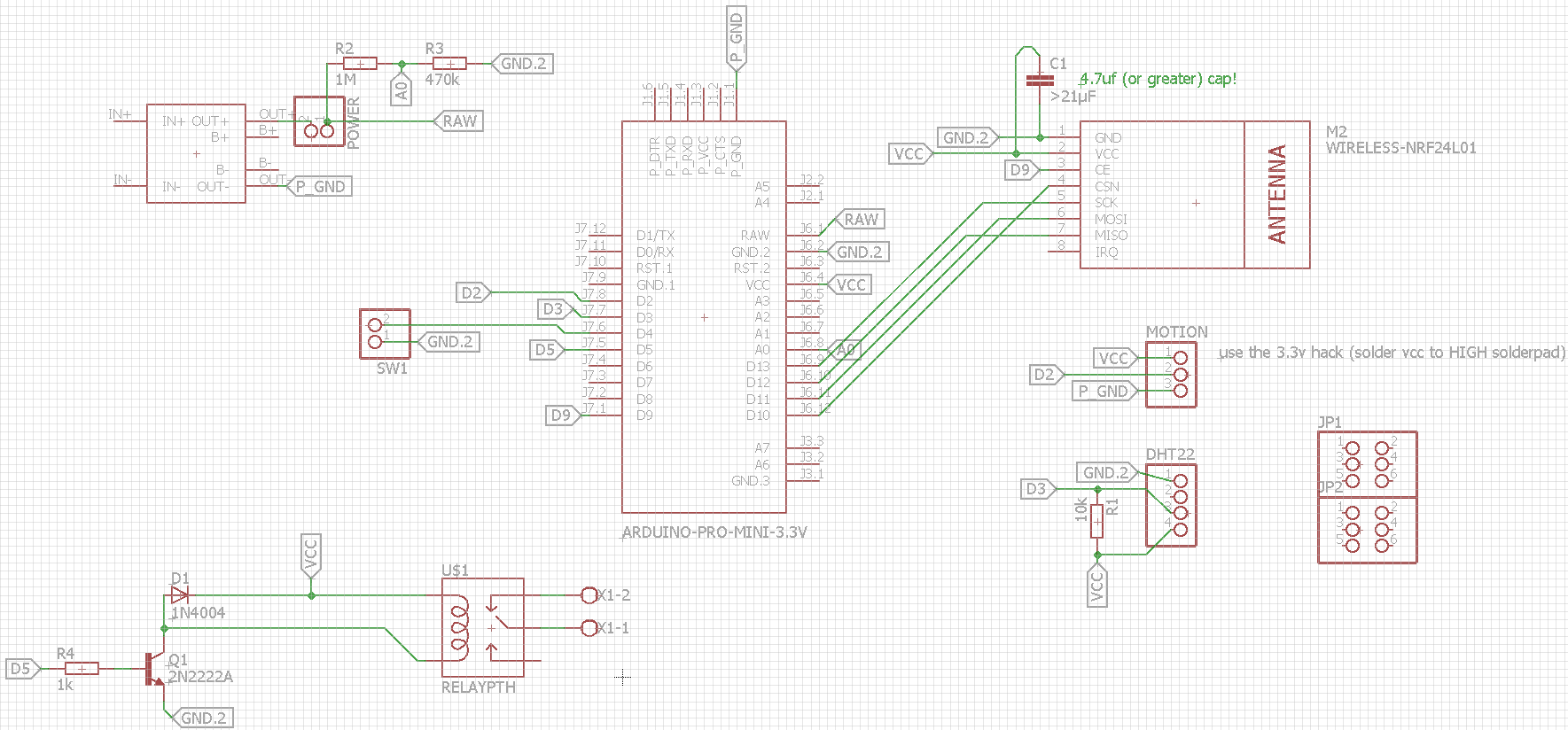
Board view (Rev 1.0)

3D board view (Rev 1.0)
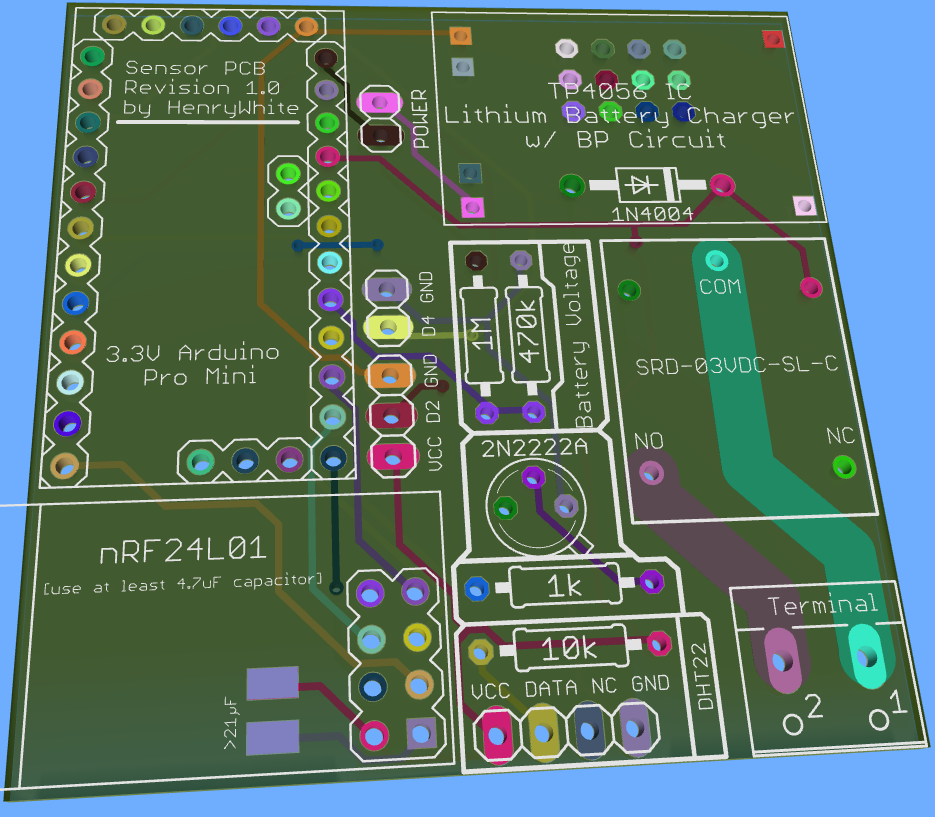
Build files
Rev 1.0:
- Now with additional relay, properly connected using 2N2222A transistor, flyback diode, 1kΩ resistor and terminal block for easy attaching of "switchable things" to the relay
- proper alignment of DHT22
Eagle files: 0_1453762986505_Sensorboard_v1.0.zip
Gerber files: 0_1453763061782_Sensorboard_v1.0_Gerber.zipRev 0.3: swapped footprints of DHT22 and prototyping area to prevent false temp measurements when charging the battery; connected TP4056 OUT to arduino's RAW instead of VCC_IN (so the internal voltage regulator is used)
sensorboard_v0.3.sch
sensorboard_v0.3.brdRev 0.2: added footprint for 47uF SMD capacitor standard 1210 (i guess many other smd caps will fit too)
sensorboard_v0.2.sch
sensorboard_v0.2.brdRev. 0.1
untitled.sch untitled.brdI just added revision 0.3 to the first post:
@HenryWhite said:
Rev 0.3: swapped footprints of DHT22 and prototyping area to prevent false temp measurements when charging the battery; connected TP4056 OUT to arduino's RAW instead of VCC_IN (so the internal voltage regulator is used)
sensorboard_v0.3.sch
sensorboard_v0.3.brd -
Thanks for Rev 03. Another optimization would be to turn the DHT22 180 degrees. Then the open front would face outside. Better for air circulation if put into a case with only a small open slot for the DHT.
-
This post is deleted!
-
Here it is: Revision 1.0
Changes:
- Now with additional relay, properly connected using 2N2222A transistor, flyback diode, 1kΩ resistor and terminal block for easy attaching of "switchable things" to the relay
- proper alignment of DHT22
Schematics (Rev 1.0)

Board view (Rev 1.0)

3D board view (Rev 1.0)

Build files
Eagle files: 0_1453762986505_Sensorboard_v1.0.zip
Gerber files: 0_1453763061782_Sensorboard_v1.0_Gerber.zip -
I just received my ordered PCBs (Revision 0.1) from Elecrow. The PCBs are very well made for that low price! (I got 14PCBs for 14$)
It fits nicely in a 75x75mm electric box (not the prettiest housing, but very cheap and easily processable for drilling holes for the connections; plus you can paint it to make it more beautiful :smile: )
Since it is revision 0.1, I had to cut one pcb trace (V+ from POWER to Arduino's V_IN) and connect V+ from POWER manually with Arduino's RAW input.
Soldering directly to the battery went better than I thought!


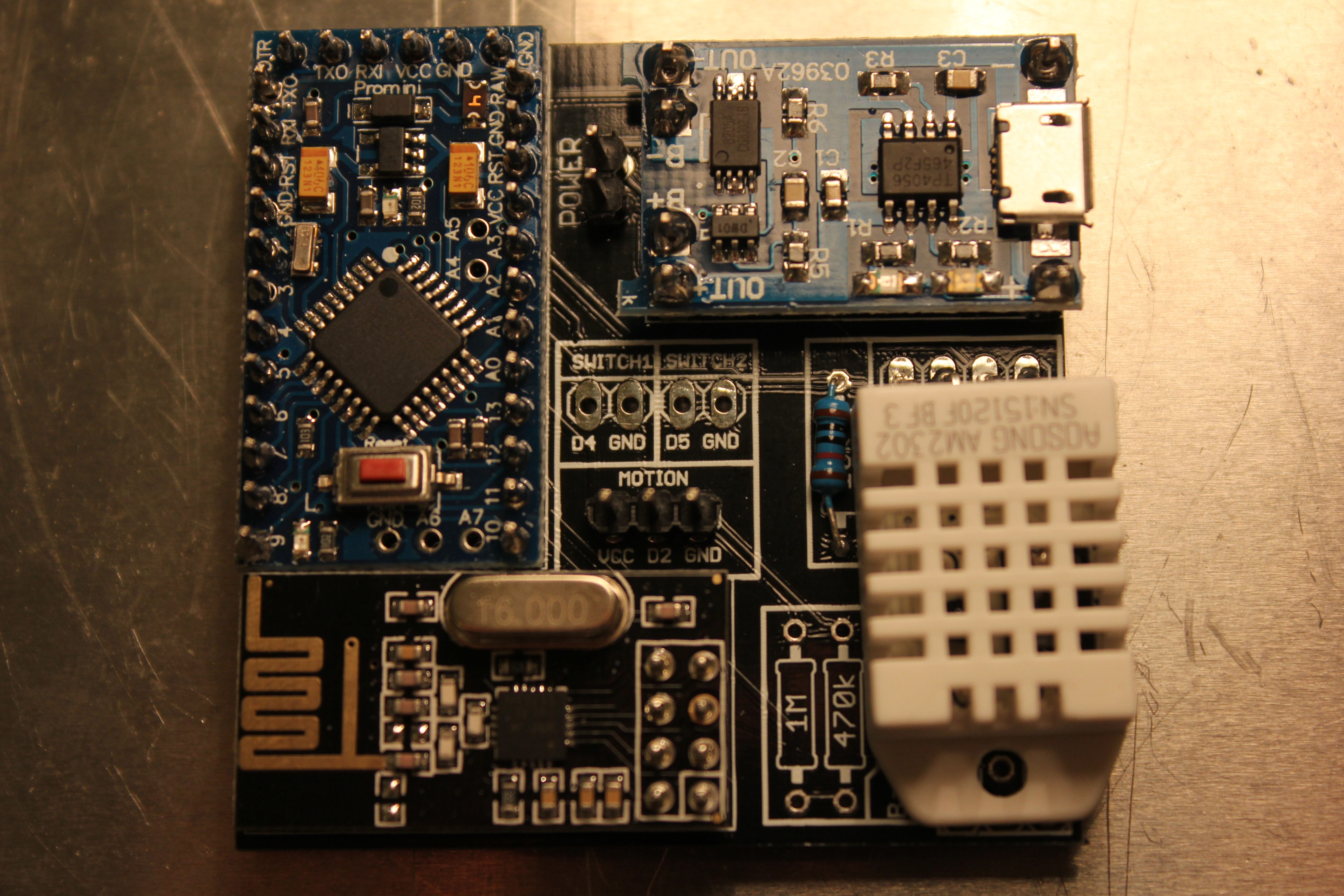
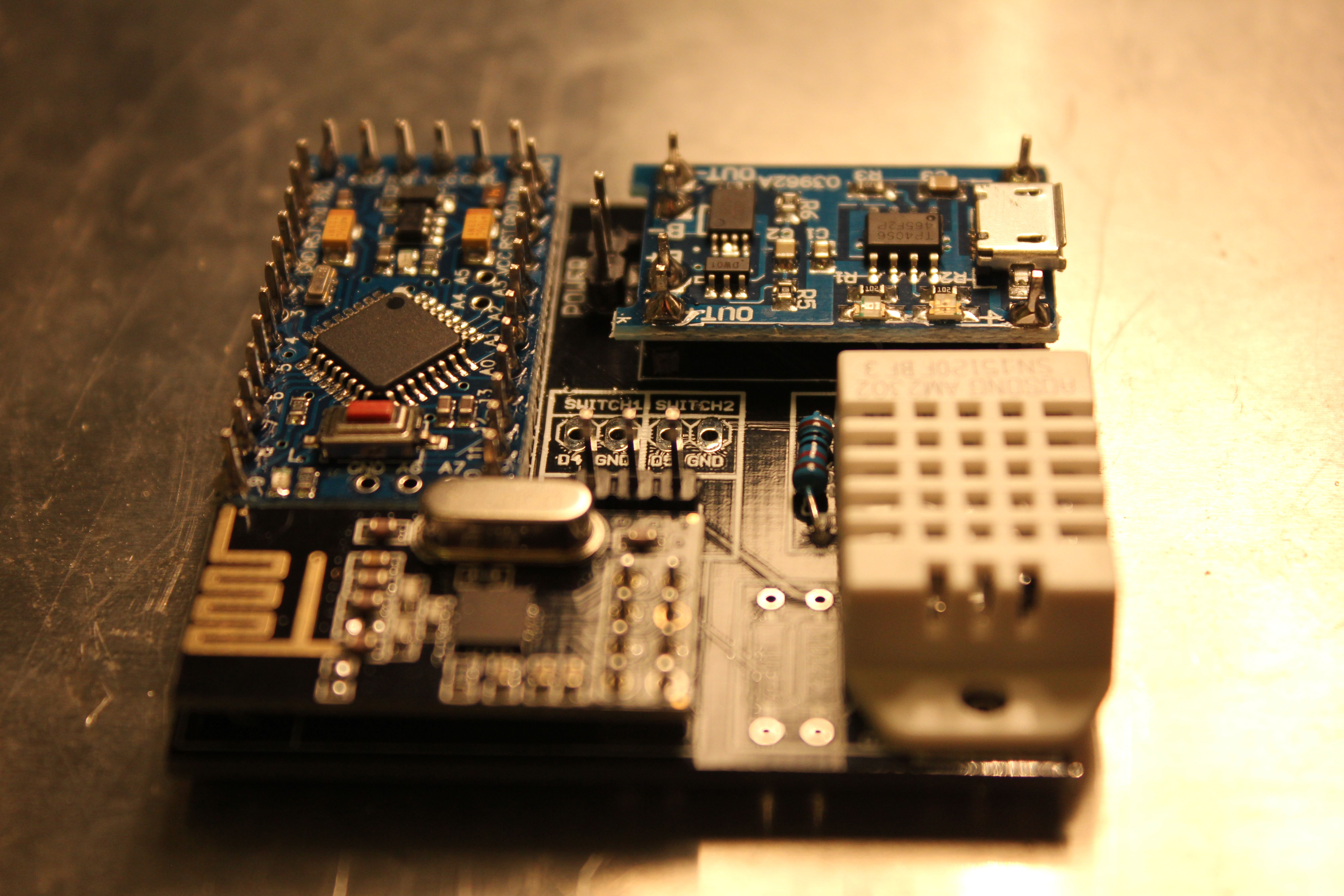
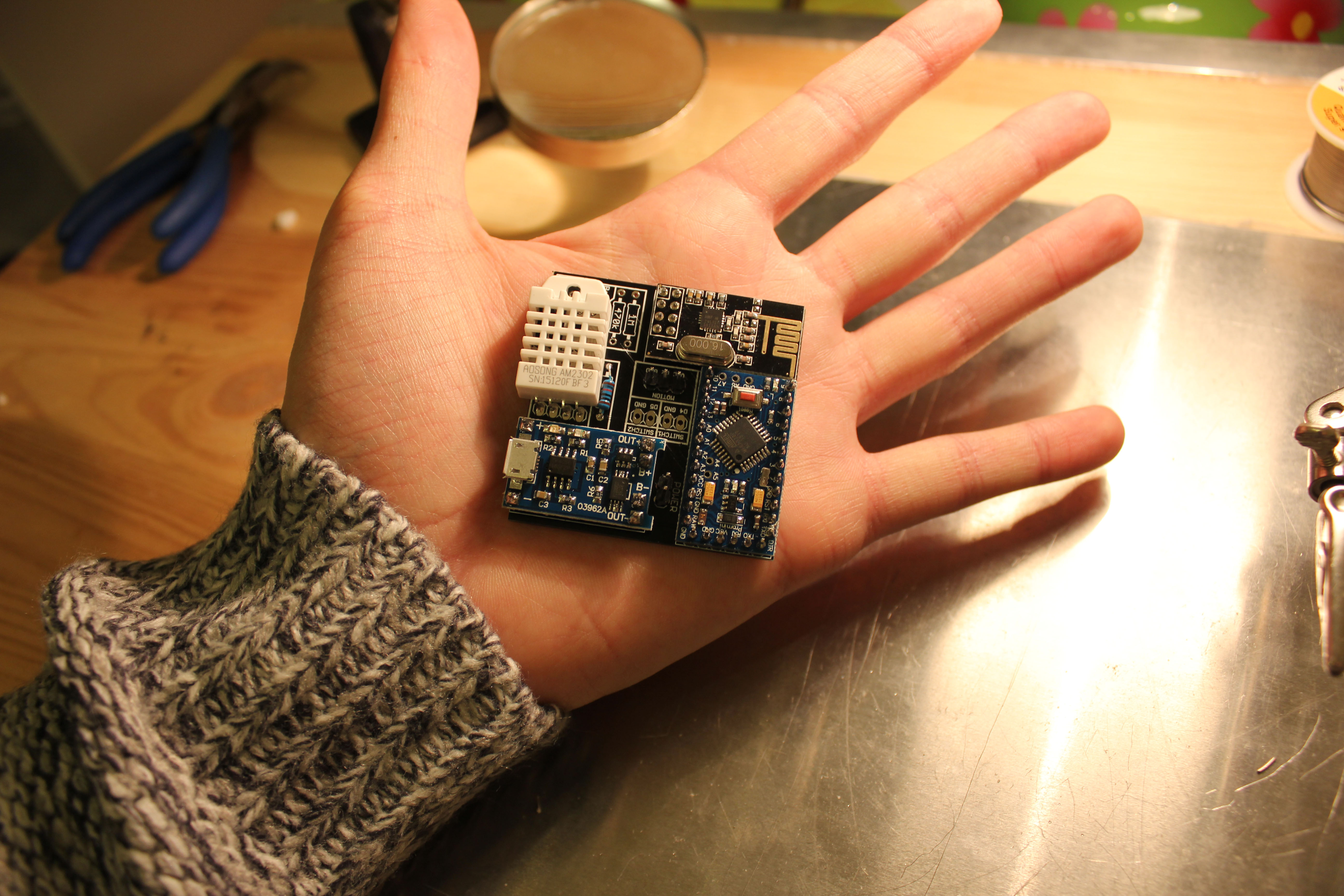
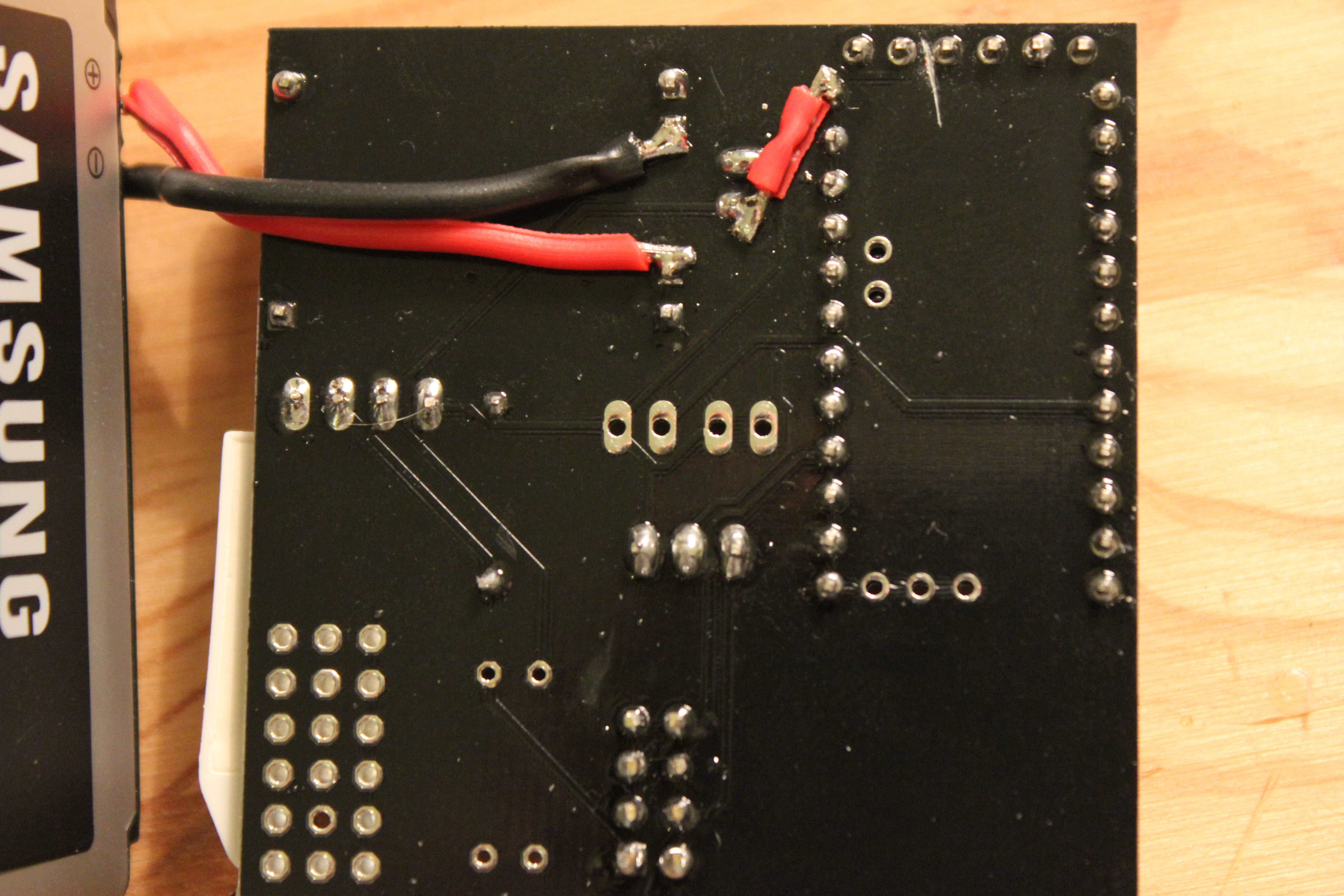

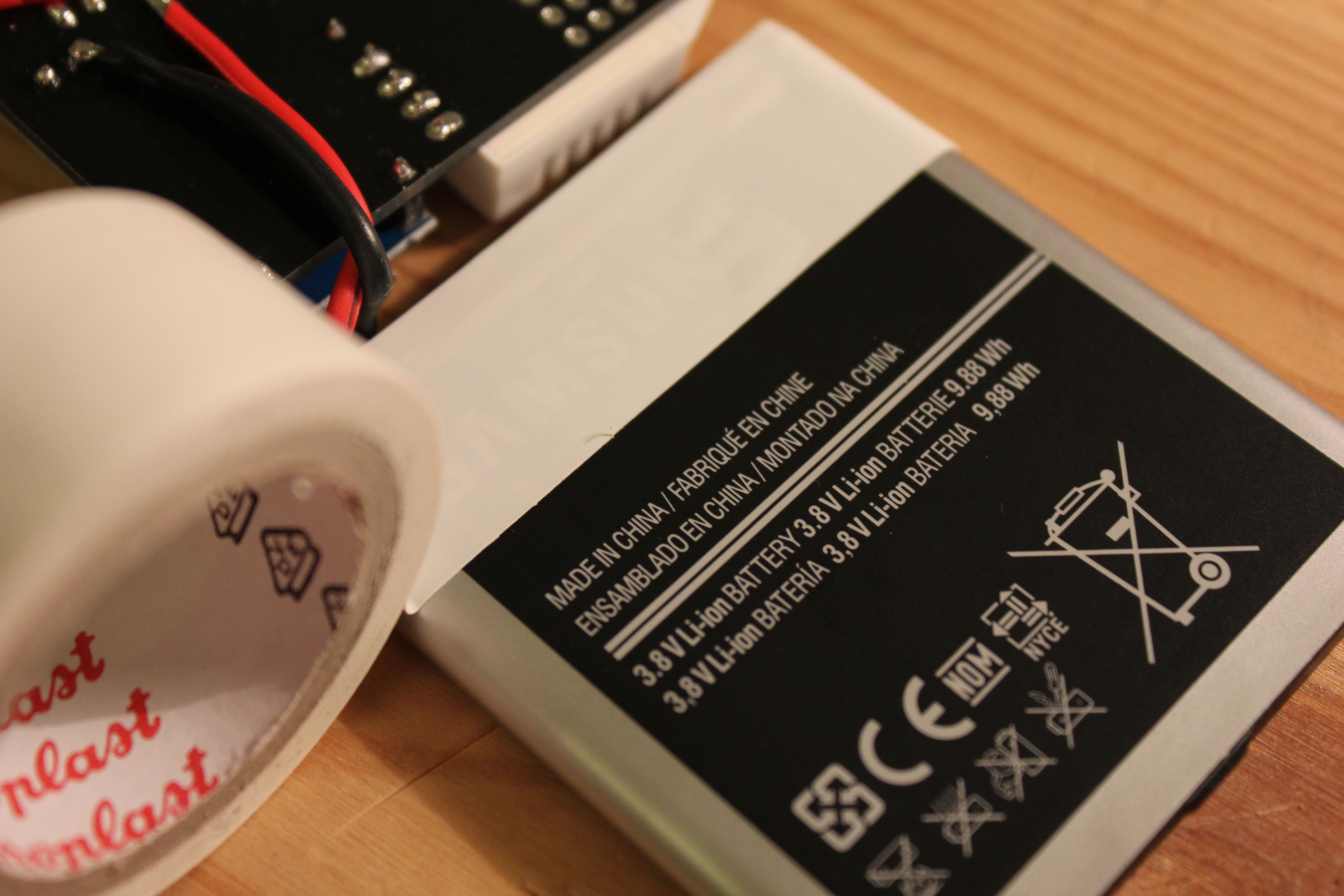



-
Nice, but I think R3 =330k would give you a better battery voltage monitoring divider ratio (Vmax 4.43V). Maybe a little higher total resistance would limit current loss though (even 10M+3M would work).
Maybe something useful here. -
Nice, but I think R3 =330k would give you a better battery voltage monitoring divider ratio (Vmax 4.43V). Maybe a little higher total resistance would limit current loss though (even 10M+3M would work).
Maybe something useful here. -
@HenryWhite Did you make any estimates how long your node is running on the fully charged battery?
-
@HenryWhite Did you make any estimates how long your node is running on the fully charged battery?
@alexsh1 said:
@HenryWhite Did you make any estimates how long your node is running on the fully charged battery?
I'm just testing it :)
The Version without relay (Rev. 0.3) should be good for at least two months, assuming you want to read temp/humidity every 60 seconds and you have a 2600mAh (smartphone) battery.
I think you can improve the battery life much further, for example with the following:- a better sketch, e.g. bigger sleep time
- removing the power LED on the arduino
- higher battery capacity
The DHT22 is also drawing much current, i think i will replace it in a next version with a Si7021.
PS: The version with relay could never run very long, because you need to keep the node awake in order to send a command to switch the relay. But even if you use the relay version, you could just attach a bigger battery.
-
@HenryWhite Thanks - I was gonna make this suggestion about the DHT22:
- you do not need temp/hum every 60 sec. 5 -10 mins should be enough
- Power LED has a negligible consumption if you have DHT22 onboard.
- I have Si7021 (powered by two batteries) and DHT22 (powered from 240V via AC/DC adapter). Si7021 is more accurate and less power hungry. My suggestion would be Si7021 or BMP280 as they are working the best with batteries.
Just out of curiosity, what do you do when the battery is flat? Take out the node and charge it? Or charging is automated?
-
@HenryWhite Thanks - I was gonna make this suggestion about the DHT22:
- you do not need temp/hum every 60 sec. 5 -10 mins should be enough
- Power LED has a negligible consumption if you have DHT22 onboard.
- I have Si7021 (powered by two batteries) and DHT22 (powered from 240V via AC/DC adapter). Si7021 is more accurate and less power hungry. My suggestion would be Si7021 or BMP280 as they are working the best with batteries.
Just out of curiosity, what do you do when the battery is flat? Take out the node and charge it? Or charging is automated?
@alexsh1 said:
Just out of curiosity, what do you do when the battery is flat? Take out the node and charge it? Or charging is automated?
You don't have to take anything apart. Just plug in a micro usb loading cable in the Tp4056 and the battery will be charged. Plus, you never need to shutdown the node, charging works simultaneously.
-
A little update in terms of battery lifetime: all nodes are still running, I think they will last at least for 10 months before you have to recharge them.
-
I've been looking for some time for similar module/board,
(was too lazy to make it myself) and somehow i never found this board.
If I understood you are now on half the battery (after a six months) ?Did you had any tests with the Relay version on battery power?
I guess it will consume quite some power if it needs to keep relay on from the battery?
If it relay doesn't consume a lot of power then it could be very very useful to have it there (or if it is switched for short period of time and not that often)Project looks very good, it has all it needs for generic module, thank you for making it.
-
I've been looking for some time for similar module/board,
(was too lazy to make it myself) and somehow i never found this board.
If I understood you are now on half the battery (after a six months) ?Did you had any tests with the Relay version on battery power?
I guess it will consume quite some power if it needs to keep relay on from the battery?
If it relay doesn't consume a lot of power then it could be very very useful to have it there (or if it is switched for short period of time and not that often)Project looks very good, it has all it needs for generic module, thank you for making it.
@dakipro said:
I've been looking for some time for similar module/board,
(was too lazy to make it myself) and somehow i never found this board.
If I understood you are now on half the battery (after a six months) ?Did you had any tests with the Relay version on battery power?
I guess it will consume quite some power if it needs to keep relay on from the battery?
If it relay doesn't consume a lot of power then it could be very very useful to have it there (or if it is switched for short period of time and not that often)Project looks very good, it has all it needs for generic module, thank you for making it.
Yes, i expect the battery to last ~12 months with one motion sensor + temp/hum sensor installed.
When you want to use the relay, the board normally consumes a lot more power and the battery would not even last 1 month I think, because your board has to be active all the time to receive commands for the relay.If you do not insist on instant relay switching, you could implement the SmartSleep() functionality of mysensors. With this the battery should last way longer, maybe even as long as without relay.
By the way, I got myself a 3D printer and designed a casing for my usecase (motion sensor -- but the case should fit a variety of other components too):
![0_1470836685263_PHOTO_20160810_154021[1].jpg](/uploads/files/1470836690189-photo_20160810_154021-1.jpg)
![0_1470836715515_PHOTO_20160810_154056[1].jpg](/uploads/files/1470836720266-photo_20160810_154056-1.jpg)

-
Makes sense. I am just comparing different editions, it appeared to me that the relay board could be a completelly separate project/pcb, as it would not work quite well on the rechargeable battery, and has quite a different purpose/audience I guess.
Rev 0.3 would then be trully "rechargeable" battery sensor (as in the title), and rev 1.0 would be completelly different, or does it contain same pins as 0.3 (pluss relay which can simply be ignored?).I would use it for motion, temp+hum, door switch and light/lux meter, is it then safe to order rev 1.0 for such a sensor?
And to order it, i usually/only need the .brd and sch files right?
p.s. custom housing looks very slick :)
-
Makes sense. I am just comparing different editions, it appeared to me that the relay board could be a completelly separate project/pcb, as it would not work quite well on the rechargeable battery, and has quite a different purpose/audience I guess.
Rev 0.3 would then be trully "rechargeable" battery sensor (as in the title), and rev 1.0 would be completelly different, or does it contain same pins as 0.3 (pluss relay which can simply be ignored?).I would use it for motion, temp+hum, door switch and light/lux meter, is it then safe to order rev 1.0 for such a sensor?
And to order it, i usually/only need the .brd and sch files right?
p.s. custom housing looks very slick :)
@dakipro said:
Rev 0.3 would then be trully "rechargeable" battery sensor (as in the title), and rev 1.0 would be completelly different, or does it contain same pins as 0.3 (pluss relay which can simply be ignored?).
Rev 1.0 has nearly the same pins, except that you can only connect one switch (Rev 0.3: two switches) - but yes, you can simply ignore the relay, diode and transistor if you don't want to use a relay.
Nonetheless, if you are sure that you will never use the board with a relay, I suggest that you go with Rev. 0.3.And to order it, i usually/only need the .brd and sch files right?
It depends on the pcb manufacturer, but most of the time you will need the gerber files (which can be generated with the .sch file through the CAM-processor with the .cam file (which the specific board house provides).
PS: I ordered my boards from elecrow.
